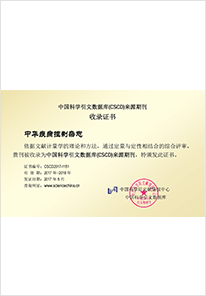2016 Vol. 20, No. 9
Display Method:
2016, 20(9): 863-866.
doi: 10.16462/j.cnki.zhjbkz.2016.09.001
Abstract:
2016, 20(9): 867-871.
doi: 10.16462/j.cnki.zhjbkz.2016.09.002
Abstract:
2016, 20(9): 872-875.
doi: 10.16462/j.cnki.zhjbkz.2016.09.003
Abstract:
2016, 20(9): 876-879,884.
doi: 10.16462/j.cnki.zhjbkz.2016.09.004
Abstract:
2016, 20(9): 880-884.
doi: 10.16462/j.cnki.zhjbkz.2016.09.005
Abstract:
2016, 20(9): 885-887,892.
doi: 10.16462/j.cnki.zhjbkz.2016.09.006
Abstract:
2016, 20(9): 888-892.
doi: 10.16462/j.cnki.zhjbkz.2016.09.007
Abstract:
2016, 20(9): 897-900,909.
doi: 10.16462/j.cnki.zhjbkz.2016.09.009
Abstract:
2016, 20(9): 901-904.
doi: 10.16462/j.cnki.zhjbkz.2016.09.010
Abstract:
2016, 20(9): 905-909.
doi: 10.16462/j.cnki.zhjbkz.2016.09.011
Abstract:
2016, 20(9): 910-912,917.
doi: 10.16462/j.cnki.zhjbkz.2016.09.012
Abstract:
2016, 20(9): 913-917.
doi: 10.16462/j.cnki.zhjbkz.2016.09.013
Abstract:
2016, 20(9): 918-920,925.
doi: 10.16462/j.cnki.zhjbkz.2016.09.014
Abstract:
2016, 20(9): 926-928,944.
doi: 10.16462/j.cnki.zhjbkz.2016.09.016
Abstract:
2016, 20(9): 929-931,970.
doi: 10.16462/j.cnki.zhjbkz.2016.09.017
Abstract:
2016, 20(9): 932-935.
doi: 10.16462/j.cnki.zhjbkz.2016.09.018
Abstract:
2016, 20(9): 936-939.
doi: 10.16462/j.cnki.zhjbkz.2016.09.019
Abstract:
2016, 20(9): 940-944.
doi: 10.16462/j.cnki.zhjbkz.2016.09.020
Abstract:
2016, 20(9): 945-947.
doi: 10.16462/j.cnki.zhjbkz.2016.09.021
Abstract:
2016, 20(9): 948-952.
doi: 10.16462/j.cnki.zhjbkz.2016.09.022
Abstract:
2016, 20(9): 953-956,961.
doi: 10.16462/j.cnki.zhjbkz.2016.09.023
Abstract:
2016, 20(9): 957-961.
doi: 10.16462/j.cnki.zhjbkz.2016.09.024
Abstract:
2016, 20(9): 962-964,968.
doi: 10.16462/j.cnki.zhjbkz.2016.09.025
Abstract:
2016, 20(9): 965-966.
doi: 10.16462/j.cnki.zhjbkz.2016.09.026
Abstract:
2016, 20(9): 967-968.
doi: 10.16462/j.cnki.zhjbkz.2016.09.027
Abstract:
2016, 20(9): 969-970.
doi: 10.16462/j.cnki.zhjbkz.2016.09.028
Abstract:


 Email alert
Email alert RSS
RSS Abstract
Abstract PDF
PDF





